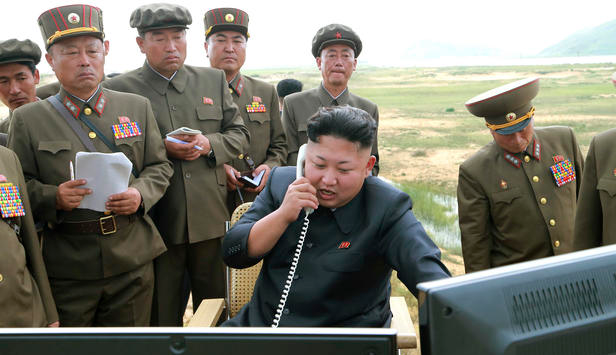China’s giant fusion research plant: Clean energy breakthrough or nuclear arms threat?
By isabelle // 2025-02-03
Tweet
Share
Copy

- China is building a large nuclear fusion facility in Mianyang, potentially larger and more advanced than the U.S. NIF.
- The facility's design and size suggest significant advancements in fusion energy, but its proximity to a nuclear weapons research center raises concerns.
- Fusion technology can be used for both clean energy and simulating nuclear explosions, which has drawn international scrutiny.
- China’s annual fusion budget of $1.5 billion and recent breakthroughs in plasma temperature sustainment position it as a leader in fusion research.
- The facility underscores China’s broader push for technological supremacy, including advancements in AI, while raising questions about balancing progress and security.
A facility with global implications
The new facility, located in Mianyang, Sichuan province, features four laser bays converging on a central experimental chamber, mirroring the design of the U.S. NIF. Decker Eveleth, a researcher at the U.S.-based CNA Corp, estimates the Chinese experiment bay is significantly larger than its American counterpart, signaling Beijing’s ambitious goals in fusion technology. Nuclear fusion, often dubbed the "holy grail" of clean energy, promises a near-limitless power source by replicating the reactions that fuel the sun. However, the same technology can also be used to simulate nuclear explosions, enabling countries to refine their weapons designs without conducting live tests. This dual-use capability has drawn scrutiny, particularly given China’s rapid expansion of its nuclear arsenal. William Alberque, a nuclear policy analyst at the Henry L. Stimson Center, told Reuters, "Any country with an NIF-type facility can and probably will be increasing their confidence and improving existing weapons designs, and facilitating the design of future bomb designs without testing."China’s fusion ambitions
China’s investment in fusion research is not new. The country has been developing laser technologies for inertial confinement fusion (ICF) since the late 20th century and currently operates several laser facilities, including the SG-III in Mianyang. Recent breakthroughs, such as sustaining a plasma temperature of 100 million degrees Celsius for over 1,000 seconds at the Experimental Advanced Superconducting Tokamak (EAST), have positioned China as a leader in fusion research. The U.S. has also made strides, with the NIF achieving a "scientific breakeven" in 2022 by producing more energy from a fusion reaction than was used to ignite it. However, China’s fusion budget—$1.5 billion annually—nearly doubles that of the U.S., underscoring its commitment to dominating the field. The fusion facility is just one piece of China’s broader push for technological supremacy. The country is also making waves in artificial intelligence (AI), with firms like DeepSeek leveraging advanced chips to develop competitive AI models at a fraction of the cost of Western counterparts. This rapid progress has sent shockwaves through Silicon Valley, with President Trump calling it a "wake-up call" for American tech firms.Balancing progress and security
While fusion research holds immense promise for clean energy, its potential military applications cannot be ignored. The Comprehensive Nuclear-Test-Ban Treaty (CTBT), which both China and the U.S. have signed, prohibits nuclear explosions but allows for subcritical and laser fusion experiments. This loophole enables nations to advance their nuclear capabilities without violating international agreements. As China’s fusion facility nears completion, the global community faces a delicate balancing act: encouraging scientific progress while mitigating the risks of an arms race. The stakes are high, as the technology could either revolutionize energy production or escalate geopolitical tensions. China’s massive fusion research facility in Mianyang represents a bold step toward achieving clean energy breakthroughs, but its potential dual-use for nuclear weapons development raises significant concerns. As the race for fusion technology heats up, the world will be watching closely to see whether this facility becomes a beacon of innovation or a flashpoint in the ongoing competition for technological and military supremacy. Sources for this article include: OilPrice.com DailyMail.co.uk Reuters.comTweet
Share
Copy
Tagged Under:
China national security nuclear weapons research nuclear energy conspiracy big government deception power dangerous future science nuclear fusion future tech military tech badscience fusion technology weapons technology energy supply fuel supply
You Might Also Like
The marvel of the African savannah: Baobab fruit, a nutritional powerhouse
By Zoey Sky // Share
Elon Musk’s DOGE feeds Education Dept. data into AI systems to identify inefficiencies
By Willow Tohi // Share
AI scammers impersonate Italian defense minister to target wealthy elite
By Cassie B. // Share
Recent News
Ukraine’s desperate recruitment drive fails to attract youth despite $24K bonuses
By isabelle // Share
How North Korea's massive military aid is keeping Putin's war machine running
By isabelle // Share
Trump administration expands DEPORTATIONS of violent illegals to El Salvador's supermax CECOT prison
By ramontomeydw // Share











